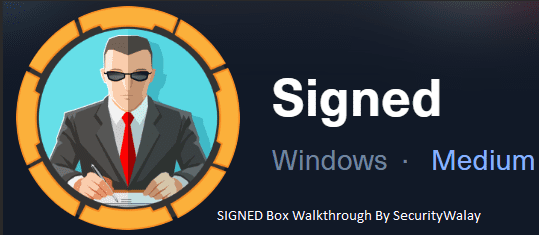In the ever-evolving landscape of cybersecurity, continuous monitoring has become a cornerstone of effective security operations. As threats become more sophisticated and persistent, organizations must adopt advanced strategies to stay ahead. Cloud-based Security Orchestration, Automation, and Response (SOAR) platforms offer a robust solution by integrating continuous monitoring into their core functionalities. This blog post delves into the importance of continuous monitoring in cloud-based SOAR, outlining its benefits, implementation strategies, and impact on overall security posture.
Understanding Continuous Monitoring
What is Continuous Monitoring?
Continuous monitoring is the real-time, ongoing assessment of an organization’s security environment. It involves the constant surveillance of network traffic, user activity, and system health to detect anomalies, vulnerabilities, and potential threats. Unlike periodic assessments, continuous monitoring provides immediate insights, enabling swift response to emerging security issues.
The Role of Continuous Monitoring in Cybersecurity
Continuous monitoring plays a critical role in maintaining a proactive security posture. It ensures that security teams can:
- Identify Threats Early: Detect suspicious activities and potential breaches before they escalate.
- Maintain Compliance: Ensure ongoing adherence to regulatory requirements and industry standards.
- Enhance Visibility: Gain a comprehensive view of the security landscape, including all assets and endpoints.
Integrating Continuous Monitoring with Cloud-Based SOAR
What is Cloud-Based SOAR?
Cloud-based SOAR solutions combine security orchestration, automation, and response capabilities in a unified platform hosted in the cloud. These solutions enable organizations to integrate various security tools, automate routine tasks, and streamline incident response processes.
Why Continuous Monitoring is Essential in SOAR
Continuous monitoring is a fundamental component of cloud-based SOAR for several reasons:
- Real-Time Threat Detection: Continuous monitoring feeds real-time data into the SOAR platform, enhancing its threat detection capabilities.
- Automated Response: By providing up-to-date information, continuous monitoring enables automated workflows to respond to incidents immediately.
- Comprehensive Analysis: Continuous data collection allows for thorough analysis and correlation of events, improving the accuracy of threat detection and response.
Benefits of Continuous Monitoring in Cloud-Based SOAR
Enhanced Threat Detection and Response
Continuous monitoring significantly improves the ability of SOAR platforms to detect and respond to threats. By continuously analyzing network traffic, user behavior, and system logs, SOAR solutions can identify anomalies and potential threats in real-time. This immediate detection allows for prompt response actions, minimizing the impact of security incidents.
Improved Incident Management
Continuous monitoring provides a constant stream of data, which is crucial for effective incident management. With real-time insights, security teams can prioritize and triage incidents more efficiently. Automated workflows can be triggered to handle routine tasks, allowing human analysts to focus on more complex issues.
Better Compliance and Reporting
Regulatory compliance is a critical aspect of cybersecurity. Continuous monitoring ensures that organizations remain compliant with industry standards and regulations. SOAR platforms can automatically generate reports based on continuous monitoring data, simplifying the compliance process and providing evidence of adherence to security policies.
Increased Operational Efficiency
By automating the monitoring process, cloud-based SOAR solutions reduce the workload on security teams. Continuous monitoring eliminates the need for manual data collection and analysis, freeing up resources for more strategic activities. This increased efficiency leads to faster threat detection and response times.
Implementing Continuous Monitoring in Cloud-Based SOAR
Integration with Existing Security Tools
For continuous monitoring to be effective, it must integrate seamlessly with an organization’s existing security tools. Cloud-based SOAR platforms are designed to connect with various security technologies, such as Security Information and Event Management (SIEM) systems, Endpoint Detection and Response (EDR) solutions, and threat intelligence platforms. This integration ensures that all relevant data is collected and analyzed in real-time.
Configuring Monitoring Parameters
Setting up continuous monitoring involves defining the parameters and thresholds for data collection and analysis. Organizations must determine which assets, networks, and user activities need to be monitored and establish baseline behaviors to detect anomalies. Configuring these parameters correctly is essential for accurate threat detection.
Automating Response Workflows
One of the key advantages of cloud-based SOAR is the ability to automate response actions. Continuous monitoring data can trigger automated workflows to address identified threats. For example, if an anomaly is detected, the SOAR platform can automatically isolate the affected system, alert relevant personnel, and initiate a detailed investigation.
Regular Review and Adjustment
Continuous monitoring is not a set-and-forget solution. It requires regular review and adjustment to ensure its effectiveness. Organizations should periodically assess their monitoring parameters, update their response workflows, and incorporate new threat intelligence to stay ahead of emerging threats.
The Future of Continuous Monitoring in Cloud-Based SOAR
Advancements in AI and Machine Learning
The integration of artificial intelligence (AI) and machine learning (ML) technologies is poised to enhance continuous monitoring capabilities further. AI and ML can analyze vast amounts of data more efficiently, identifying patterns and predicting potential threats with greater accuracy. These advancements will enable SOAR platforms to provide even more proactive and adaptive security measures.
Greater Adoption of Zero Trust Security Models
As organizations increasingly adopt Zero Trust security models, continuous monitoring will become even more critical. In a Zero Trust environment, every user and device is continuously verified, and continuous monitoring plays a vital role in ensuring compliance with this model. Cloud-based SOAR solutions will need to evolve to support Zero Trust architectures effectively.
Expansion of Cloud Services
The growing reliance on cloud services presents new challenges and opportunities for continuous monitoring. As more organizations move their operations to the cloud, continuous monitoring solutions must adapt to monitor cloud environments effectively. Cloud-based SOAR platforms are well-positioned to address these challenges, providing comprehensive visibility and control over cloud-based assets.
Conclusion
Continuous monitoring is an indispensable component of effective cybersecurity, particularly when integrated with cloud-based SOAR solutions. By providing real-time insights, automating response actions, and enhancing overall security operations, continuous monitoring enables organizations to stay ahead of evolving threats and maintain a robust security posture.
As cyber threats continue to grow in sophistication and frequency, the need for continuous monitoring will only increase. Organizations that adopt cloud-based SOAR solutions with robust continuous monitoring capabilities will be better equipped to protect their assets, maintain compliance, and ensure business continuity.

